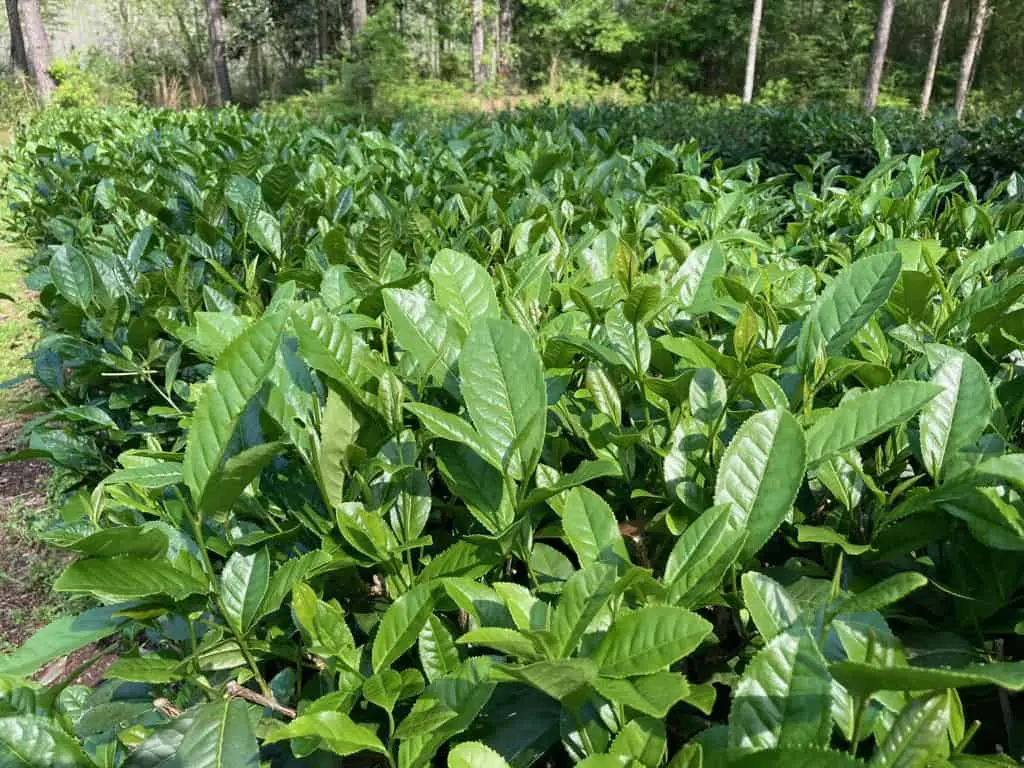
I’m sure you know that corn comes from the corn plant and apples from the apple tree, but did you know that tea comes from the tea plant?
Tea is a plant?
Yes, tea is a plant. Specifically, it is the tea plant, Camellia sinensis, which grows naturally as a shrubby tree and is closely related to ornamental camellias so popular in gardens and urban landscapes.
And yes, tea is also a hot beverage. But every type of real tea–green, black, white, oolong, and pu’er–begins as fresh leaves of Camellia sinensis and is perfected by expert tea makers who process leaves for each particular tea.
Confusion arises nowadays because any herbs, flowers, or fruits that get steeped in hot liquid are called “tea.”
But as a tea drinker, it is important to know the difference between real tea and other types of infusions. Today, I will describe what camellia-derived teas are, how the plant is grown, how it gets turned into tea, and how it ends up on the shelves of your tea merchant.
The Tea Production Process
There are four basic steps in the process of getting tea from the field to your cup:
- Cultivation of tea in a garden or plantation,
- Harvest of tea leaves,
- Manufacture of tea, which includes many steps,
- Everything else, including marketing and sales.
A detailed post could be written on each of these steps. However, for today, we’ll keep things basic and focus on the fundamental elements of making true tea.
I believe that a little background regarding the tea industry may help you to explore your tea preferences in greater depth while also helping you to learn the language of tea.
I’ll leave for a different post the discussion of how other types of “teas,” such as bush teas and herbals, are cultivated and manufactured.
Let’s start with the first step in this journey which begins in the tea field.
Table of Contents
- The Tea Production Process
- Cultivation: Where Does Tea Grow?
- Tea Harvest
- How Tea Leaves Are Processed
- Everything Else in Tea Production
- Conclusion
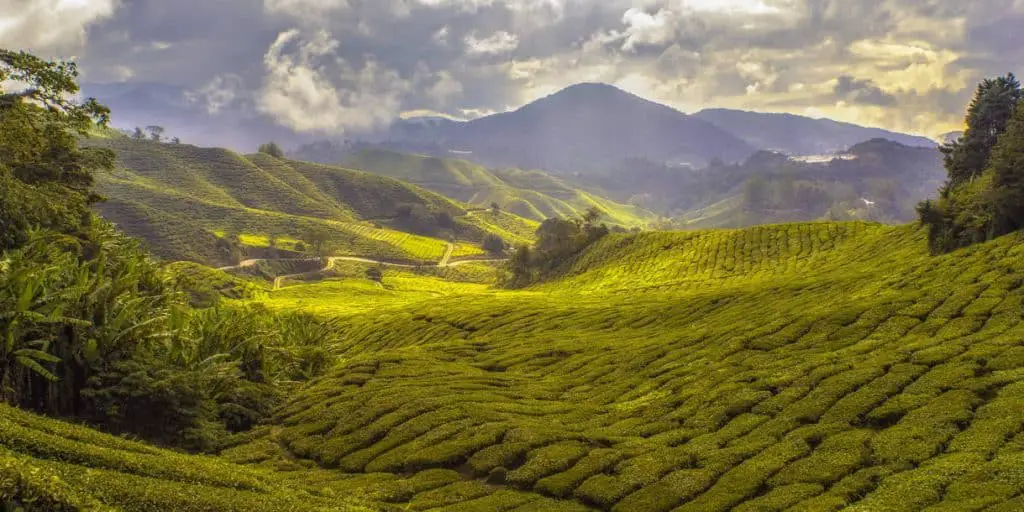
Cultivation: Where Does Tea Grow?
Tea has growth requirements that are found within tropical, sub-tropical, and some temperate regions of the world. Though tea is adaptable to a range of climates, most tea worldwide is grown in regions that are hot, humid, and rainy for at least half of the year.
Areas with these environmental qualities can be found all over the world. For example, tea is famously grown in China, India, Taiwan, and Japan where it’s hot and muggy for many months.
Though not widely appreciated, tea is also cultivated in tea countries such as Turkey, Georgia, and even Argentina.
In North America, there is a nascent tea cultivation movement with tea farms in the USA spread throughout the warm regions of the southeastern and western coasts. In Canada, tea is mostly confined to the parts of southwestern British Columbia that do not have deep winter freezes.
What Tea Farmers Do
The first thing to know about tea cultivation is that the product of interest is the plant leaf.
This is important because the tea farmer has to make decisions that favor the growth of foliage instead of the growth of tea seeds. When tea seed is allowed to mature, it is primarily used for the propagation of tea plants and not for consumption as a beverage.
To grow lots of quality tea leaf, the farmer has to consider many different factors.
The amount of rainfall and its distribution across seasons, the efficiency of soil drainage, the availability of minerals and nutrients, and the severity of sun exposure are just a few of the considerations.
To make things even more nuanced, each of the many cultivated varieties of Camellia sinensis may react to the same environmental factors in different ways.
For instance, a treasured tea variety that thrives in the high altitudes of Darjeeling, India where winters are cool, may not fare too well in the low, sub-tropical tea gardens of Yunnan Province, China.
The practice of farming is to find the best combination of local environmental conditions and tea variety for a particular area.
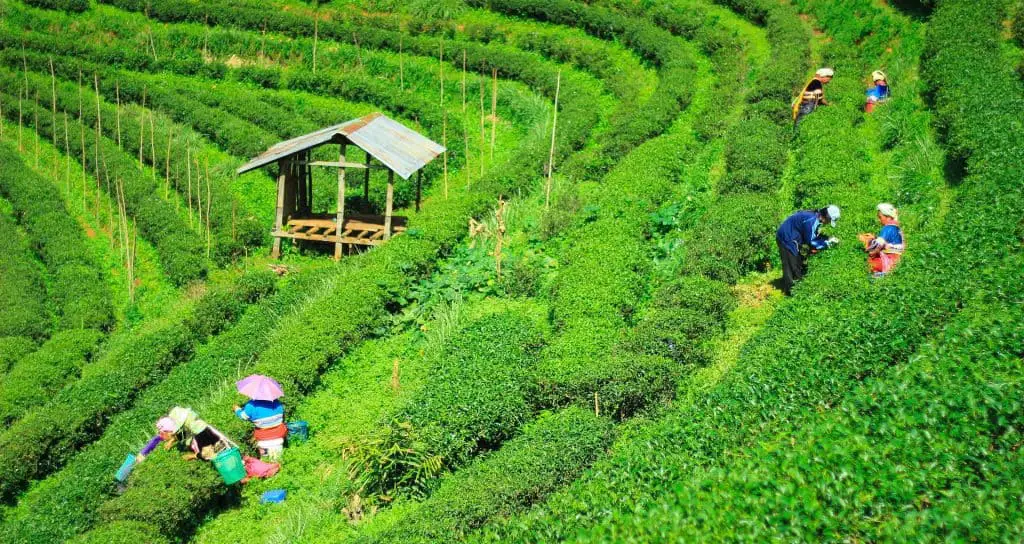
Tea Plants Live a Long Time
On most tea farms and estates, tea is planted out into hedgerows that are shaped to convenient dimensions for the harvest of leaf by hand or machine.
After about three years of growth, farmers will begin to harvest leaf to explore its tea-making potential. An initial sampling must be done lightly so as not to cause the plant to divert resources from the developing root system or distort the plant’s emerging shrubby form.
High-quality tea leaf may be produced from the same individual plants for decades and perhaps even centuries. If allowed to grow unrestricted, tea will grow up to 25 feet (about 7.5 meters) tall and 20 feet wide. It is believed that the deep, extensive root system of such ancient trees yields tea leaf of extraordinary quality.
During all these years of growth, the farmer must tend the tea like it is a part of the extended family. Among many duties, farmers prune plants to a proper shape and height, weeds have to be controlled, and fertilizers, composts, and amendments must be distributed.
It is a lot of work to make a healthy tea plant, let alone manage an entire tea estate containing many tens of thousands of plants.
And this brings us to the next step in tea production when farmers reap the “fruits” of their labors.
Tea Harvest
Leaf harvest for many tea varieties may begin in earnest in about the fifth year of growth. However, for some tea types such as pu’er, the leaf of young tea plants is not as desirable as leaves from plants that are decades older.
In the case of pu’er, the market value of finished tea may vary with the age of the mother plant, with tea made from the oldest trees fetching very high prices. The ideal timing of harvest just depends on the type of tea that will be made from the leaf.
Plucking Tea Leaves
When tea leaf is harvested, or plucked, by hand, there is precise control over the qualities of material harvested but with higher labor costs.
Tea leaf that is plucked by machine, using leaf-shearing devices operated by one or two individuals, or by specialized tractors, has lower labor costs but at the expense of the quality of harvested material.
In general, you will pay more for hand-plucked than for machine-plucked teas. There are exceptions, of course, and when researching tea for purchase it may be worth your while to dig a little deeper into the details of harvest.
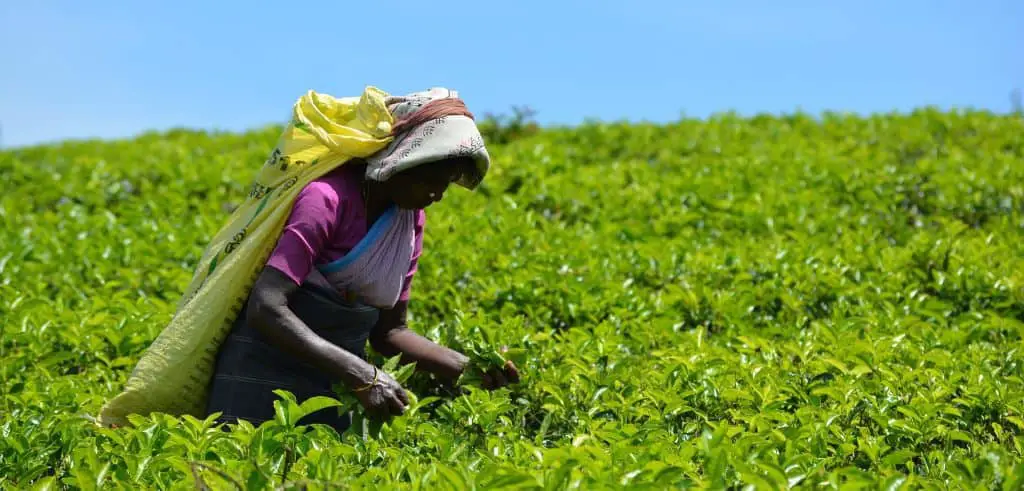
Shoots, Tips & Leaves
From the tea maker’s perspective, not all tea leaves are created equal.
For one thing, a leaf at the tip end of the branch is younger than all the leaves below it. The age of the leaf matters because many of the biochemical goodies that make a tea unique—polyphenols, their oxidases, and caffeine, for example—are more concentrated in younger leaves than in older leaves.
A plucking that is classified as fine includes the leaf bud at the branch tip, the next two nearest leaves, and the main stem that connects leaf stalks and bud. A plucking considered coarse may include everything from the bud down to the third and fourth leaves and perhaps all the stems in between.
A fine plucking is often called “two-and-a-bud,” whereas a coarse plucking is called “three (or four)-and-a-bud.” Fine material may be more valuable than coarse, but this will depend on the type of tea that is being made.
Most black teas and nearly all green teas are made exclusively from tender tips, with blacks sometimes improving in sweetness with the addition of older, third leaves in the batch. Oolong tea, in contrast, is best with four-and-a-bud material or with a semi-dormant leaf stage called banji.
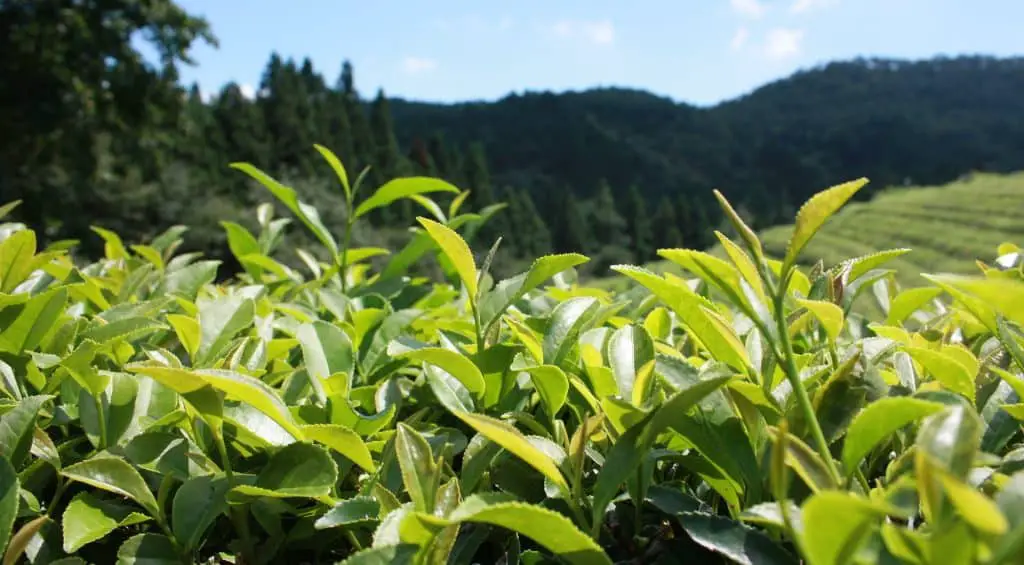
How Tea Leaves Are Processed
Tea leaf is now plucked and headed to the tea maker. Small-scale tea makers may process batches of just a few pounds of material whereas large-scale producers may be able to handle several tons.
The methods employed to process leaves depend on the type of tea to be made, the manufacturing facilities available, and the skills of the tea maker. Indeed, there is a bewildering number of ways to process leaf so let’s take an overview of the key steps involved. These steps may include withering, heating, rolling, oxidation, and drying.
Incidentally, similar procedures have been adopted in the production of herbal “teas” made from rooibos and honeybush, two plants that are different from Camellia sinensis in many regards.
Withering of Tea Leaves
Under normal harvest conditions, tea leaf begins to lose moisture, or wither, immediately after plucking. You have seen this same thing occur when you forget to put vegetables back into the refrigerator: a floppy stalk of celery is what you get for your neglect.
In the case of tea manufacture, however, leaf wither is often desirable.
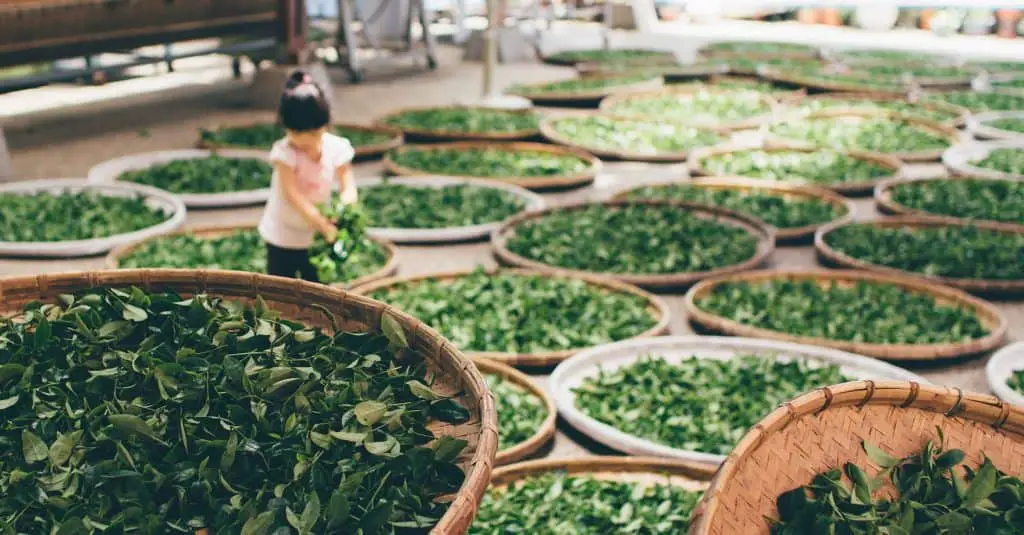
Black teas, for instance, are withered up to 14 hours or longer. Green teas such as those made in Japan are usually not allowed to wither any longer than the time it takes to transport the leaf from the field to the tea factory.
The main functions of withering are to, first, dissipate the grassy aroma of freshly plucked leaves and, second, squeeze the plant cell’s vacuoles to leak polyphenols, enzymes, and amino acids. If there is no cell leakage, then these compounds cannot mix, react, and oxidize to form lovely flavors of tea.
Though the timing, duration, and methods of withering differ, black tea, oolongs, and pu’er, each have at least one withering step after leaf harvest.
Heat “Kills” the Green
Heat may be applied to harvested tea material by either steaming or pan-roasting.
When leaf is exposed to heat above a certain temperature, enzymatic action will stop and thus preserve the grassy flavor, or “greenness,” of tea leaf. This is why leaf processed to have a green quality has little or no wither because, otherwise, reactions within the leaf will slowly diminish the green and “blacken” the tea.
Hence, the teamaker’s expression “kill green” refers to the heat-induced deactivation of biochemically active tea leaves. There is no kill-green in black tea because we want to lose the grassiness and preserve the enzymes for the next step in the process of making tea.
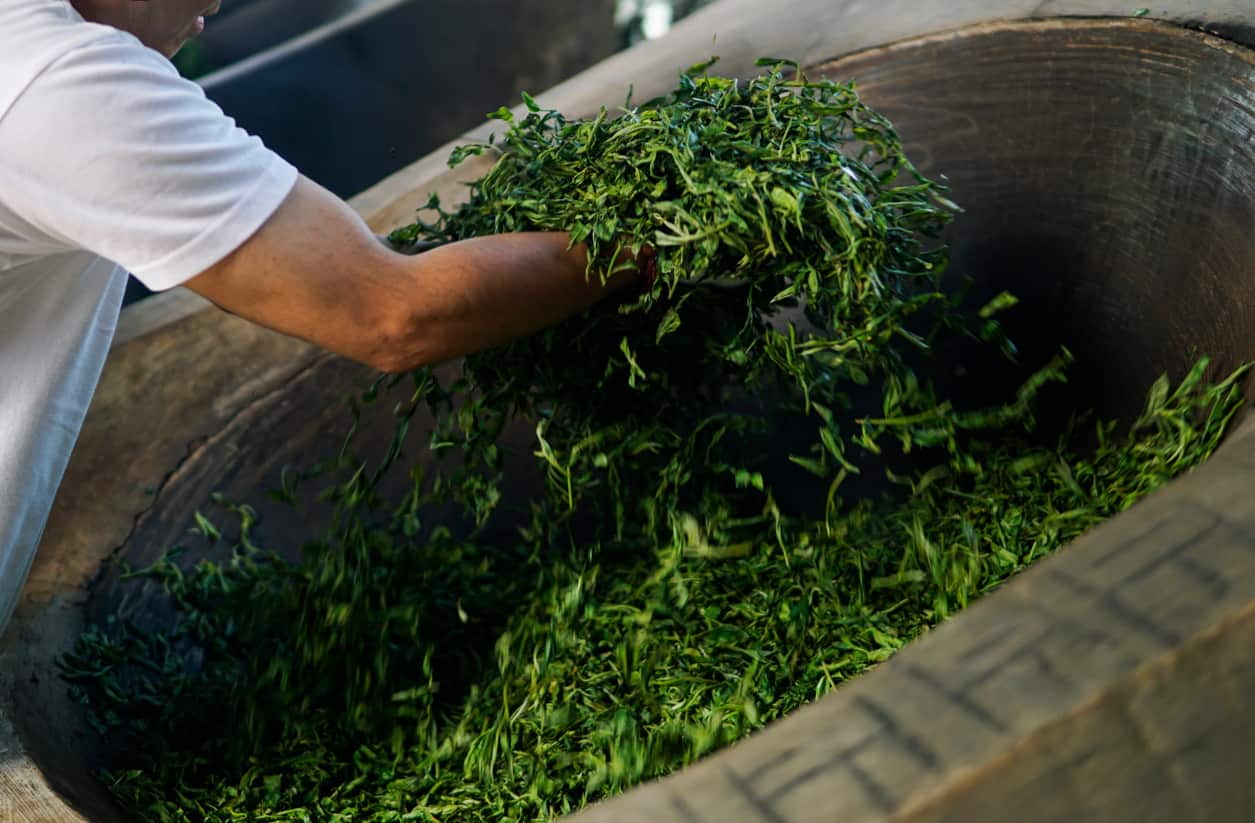
Tea Rolling
In the next step, tea material may be physically manipulated, or rolled, so that cell walls and membranes are ruptured. Rolling in turn releases and mixes flavor-promoting substances normally contained within leaf tissues.
If leaf is rolled by hand, then a pile of tea leaves, maybe as much as a pound-and-a-half (about two-thirds of a kilogram) is held between the palms and a tabletop and gently rolled in a circular motion.
In machine-rolling, tea material is pressed between two metal plates with the bottom plate stationary while the top plate moves in an elliptical path across the tea.
The rolling and twisting forces applied in both methods cause tea juices to exude out of the internal tissues and onto the leaf surface.
Regardless of the rolling method, it may take up to an hour to express enough juice to make black tea. In most other teas, the rolling step is usually much shorter in duration whereas white tea has no rolling step at all.
The challenge here is to manipulate the leaf just enough to release the goodie inside but not so much that the leaf is mangled to a pulp. This is a delicate business; especially so when the material is rolled by machine.
In any case, a nicely rolled leaf feels sticky and oily and has a fruity, nutty, or floral aroma. The aroma of rolled tea leaves is truly unforgettable.
Tea Oxidation
If tea leaf has been withered and rolled, the next step of tea production is a resting period during which oxidation occurs.
Oxidation is a transformative chemical process that causes iron to rust and cut apples to turn brown. In teas that haven’t been heat-treated, this process is helped along by enzymes that catalyze the oxidation of tea polyphenols.
It is from this oxidation reaction and its products that we obtain many different tea flavors. Colors of tea liquors (that’s the liquid you drink) also emerge from oxidation.
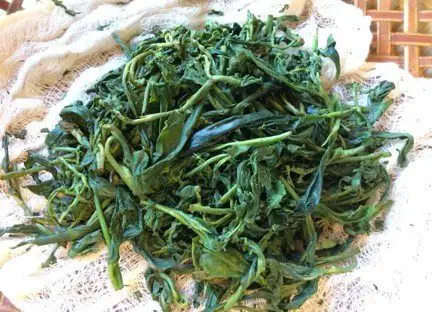
Oxidation is usually stopped after specific durations. Black tea, for example, is usually oxidized for two to four hours in an environment where relative humidity and air temperature can be regulated. High humidity and temperatures around 100-degrees Fahrenheit (about 37-degrees Celcius) are required to properly blacken tea.
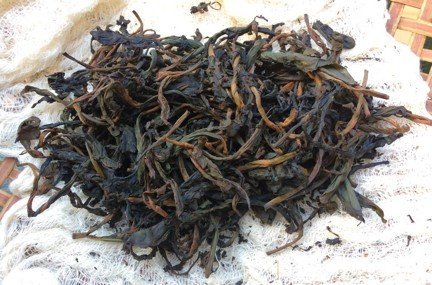
What about green tea? Recall in the case of greens that heat was applied to cut off oxidation before it could begin. The grassy, savory flavors of green teas emerge from compounds like lipoxygenases and theanine that are present in the leaf at harvest time. Oxidation would destroy these wonderful chemicals and make a different tea.
Drying Tea Leaves
The last step in the manufacture of teas is drying.
The goal of drying is to preserve the flavor profile that has emerged in the tea during withering, heating, and rolling. A dry leaf does not oxidize efficiently, if at all.
Drying may be conducted in either a specialized oven or in the warmth of the sun which locks in the products of oxidation.
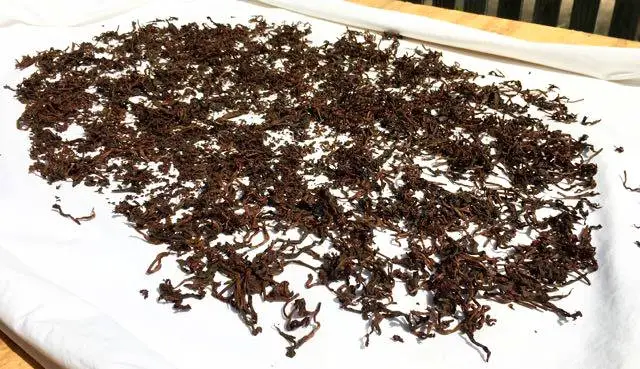
If dried tea is later exposed to moisture and air, and there are unoxidized compounds remaining in the leaf, then oxidation may continue. In a few teas, an evolution of flavor may be desirable but, in general, these changes diminish the quality of tea.
You will quickly learn how to protect your treasured teas from changes that lead to spoilage.
Everything Else in Tea Production
All that is left for the tea producer is to pack and ship the dried tea product.
However, finished tea is not always uniform in shape and size and this variation can affect market value. Packing, therefore, involves sorting and grading before storing in bins of loose-leaf tea or chopped up into pieces small enough to put into individual, single-serving bags.
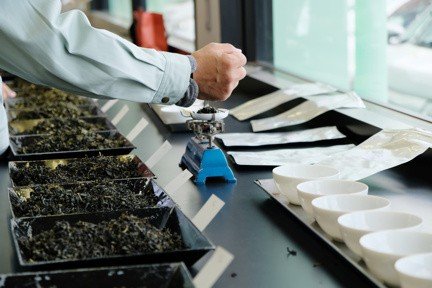
Finally, tea is put into boxes and shipped to middlemen who eventually put it in the hands of your local tea provider.
Conclusion
That’s a lot of steps. Indeed, making tea is a significant undertaking that is every bit as complex as making wine or cheese or any other agricultural product that requires considerable time and mastery.
I hope that this sketch of how tea makes it from the seed to the shop is useful. Please use it to inform your next selection of fine teas.
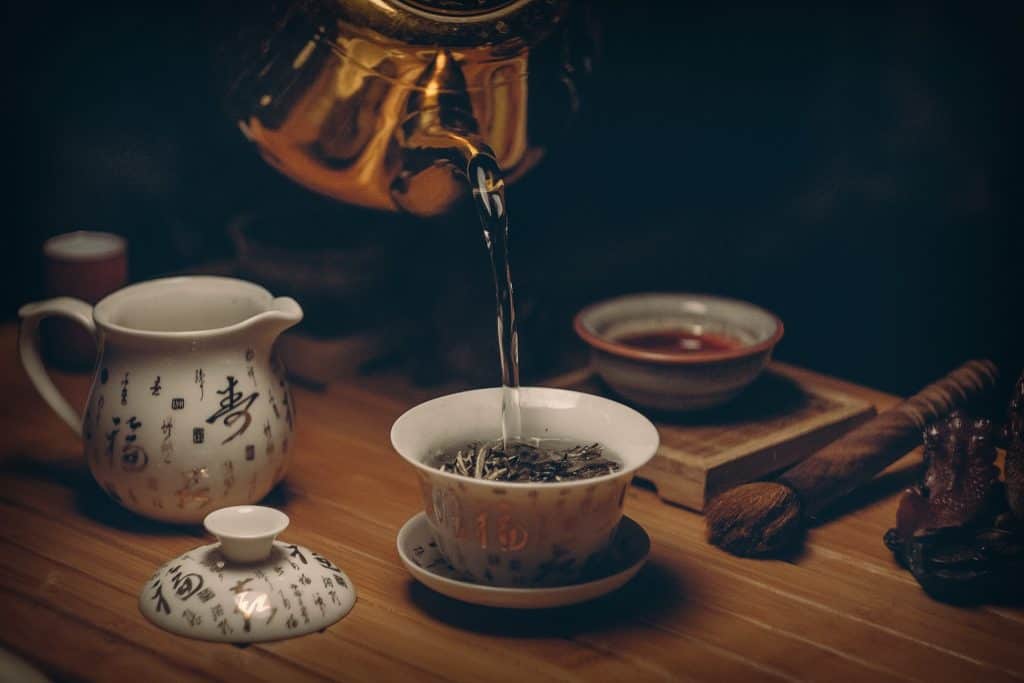
[toc]
Mike grows and crafts tea in North Florida, USA. He has advanced degrees in biology, and has undertaken coursework in manufacturing Camellia sinensis teas. Mike is a member of the US League of Tea Growers (USLTG) and has presented invited talks on tea growing. Send him a note through our Contact Page if you'd like to talk about tea.

Dear Mike,
thanks for this account – very clear and a pleasure to read.
An excellent, informative, educational experience with aroma and flavors.
I had a cuppa as I read.
Thank You
One wonders about the agricultural practices of various growers, especially regarding fertilizers, herbicides, insecticides, and the like, as well as use of harvesting via machinery vs. hand-plucking. How are laborers treated? What sorts of activities (the possibilities must be daunting) are included in ‘everything else?’ How is the consumer to know what s/he is buying regarding these, and doubtless many other, aspects of tea production?
The short answer: know your farmer. Direct accountability is the only way to verify that your concerns regarding farm practice and labor relations have been addressed. This is, of course, a tall order for most consumers, especially in the tea industry where the farm may be located half-way around the world from the tea drinker. Some tea buyers/distributors do make a sincere effort to become familiar with their tea growers, but these operations are, sadly, few in number.
My solution? I started my own tea garden. And now, I am accountable to myself.
Hi Mike,
I have swallowed your information on growing and processing tea like a hungry person being fed with banquet. I have a five year old Camellia sinesis in five gallon pot, the pleasure of seeing the beautiful white, fragrant flowers in early spring has rewarded me with years caring for it, but I also had wondered if I could make tea from it.
After reading your detailed article, now I have a compass to follow through.
I do have a question: Can I wilt the tea leaves in the dehydrator which has varies temperature settings? At 105F setting, will it kill the enzyme in the tea leaves? This way not only the leaves are wilted but also the green tea is produced. Could it be done?
Thank you so much!
Diana Wood
Hi Diana,
Yes, your dehydrator will kill the enzymes in tea leaf, but you won’t have green tea from just that one step alone. There’s more to the process than that! One day I”ll publish a more detailed post on specific techniques in tea making, but for now, you can google videos on how to make green tea and go from there.
Also, you’ll need a few more tea plants to make it worth your while. I recommend at least a half-dozen mature plants for growers who must stick with pots. Best of luck!